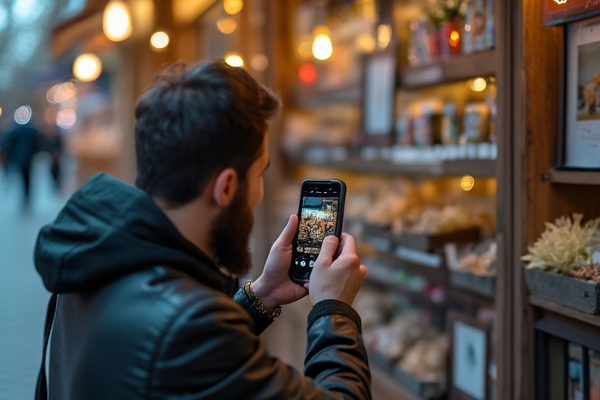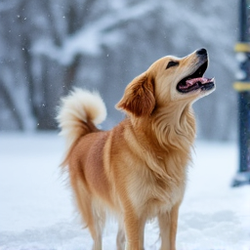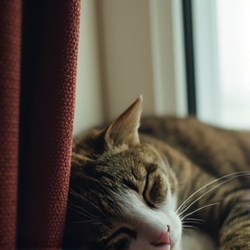Inliner.ai vs. Cloudinary: The Dynamic Alternative for Image Generation


If Cloudinary hosts your images, who creates them? Cloudinary is a powerful service for managing and delivering images and videos, but it relies on you having those assets in the first place. Many teams are now searching for a Cloudinary alternative that can fill this gap. Inliner.ai is different: it's a URL-first AI image generation CDN – meaning it not only stores and transforms images like Cloudinary, but can create new images on the fly and cache them for fast delivery. Here's how Inliner.ai compares and why thousands of developers and creators looking up "Cloudinary alternatives" are taking notice.
How It Works
Unlike Cloudinary where you upload first, then transform, Inliner generates and delivers images from a single descriptive URL:
https://img.inliner.ai/my-project/modern-saas-dashboard_1600x900.png
That single line embodies the whole value proposition:
- CDN-cached – Generated images are permanently cached for fast delivery
- Any <img> or CSS – Works directly in HTML, CSS backgrounds, or any web context
- No uploads – Skip the upload/transform workflow entirely
Tweak any image with words, not Photoshop
Need modifications? Simply append natural-language edits to your URL. Cloudinary users will recognize this as transformations, but with generation built-in:
https://img.inliner.ai/my-project/agent-greeting-customers_900x600.pngAfter:
https://img.inliner.ai/my-project/agent-greeting-customers_900x600.png/black-shirt-on-agent_1200x1200.png
One glance and you can see we handle transformations and generation in the same URL – no separate API calls or processing steps.
Why People Look for a Cloudinary Alternative
High costs and complexity
Cloudinary's pricing uses a complex credit-based system tied to bandwidth, storage, and transformations. This makes it hard to predict costs as usage grows. In fact, Cloudinary's own users cite "complex pricing tiers" and needing developer expertise as downsides. Many features (like advanced video or AI add-ons) are locked behind enterprise plans, pushing teams to consider alternatives that are more transparent and budget-friendly.
Gaps in real-time image creation
Cloudinary excels at transforming existing images (resizing, cropping, etc.), but it cannot generate new images that you don't already have. If your team needs a graphic or photo that doesn't exist, you must source it elsewhere before Cloudinary can help. This limitation is increasingly obvious as brands seek unique visuals on demand.


Search interest and competition
The demand for alternatives is proven by the market. G2's software marketplace notes that "many people are seeking popular…solutions" instead of Cloudinary, and lists a variety of competitors. On AlternativeTo.net, a popular directory that Google often puts on page 1, Cloudinary's page lists 25+ alternative services like Uploadcare, Sirv, Imgix, etc. In other words, you're not the only one curious about a better solution – and a well-crafted alternative can rank right alongside those directories to capture that interest.
How Inliner.ai Is Different (Generative CDN vs. Static CDN)
No source image needed – Inliner creates the image
With Cloudinary, you must provide an image to manipulate. Inliner uses generative AI to produce the image from a text prompt in the URL. If you need an image of "a modern app interface with futuristic neon accents" and you don't have one, just describe it in an Inliner URL – the image will be generated and delivered. This is a game-changer for teams facing the "blank canvas" problem that Cloudinary alone doesn't solve.




URL-based workflow & permanent caching
Inliner's usage feels familiar to Cloudinary users – you get a URL that you can embed in your app or site. The first time that URL is requested, Inliner's backend creates the image (this can take a few seconds), then caches it permanently on the CDN. After that, it's lightning-fast on every load, just like Cloudinary would deliver a stored image. There's no need to continually regenerate or worry about stability; the image URL becomes a permanent asset. Essentially, Inliner combines the real-time generation of an AI art tool with the reliability of a CDN cache – something Cloudinary cannot do out of the box.
Need brand elements? Upload reference images once and reuse them in any prompt for perfect consistency.
Fewer steps and integrations
Because Inliner can generate images, you eliminate steps in your workflow. With Cloudinary, a typical flow might be: design or find an image → upload to Cloudinary → get a CDN URL → transform as needed. Inliner collapses that to: request by description → get the image CDN URL. There's no separate design phase or external stock photo search. This "one-step" approach is especially appealing to agile teams and developers prototyping quickly.
Cost efficiency for creatives
Inliner.ai's pricing is designed to be developer-friendly (with a free tier for getting started). Since you're not storing a large library of uploaded images, you're mainly using compute when generating and bandwidth when serving. And notably, once an image is generated and cached, you're not paying repeatedly for that asset – no per-image fees or credit counts to worry about. By contrast, Cloudinary's multi-factor billing (storage, transformations, bandwidth) can surprise you – e.g. a tactic like generating lots of thumbnails can double your transformation costs under Cloudinary's credit system. Inliner's value is that after the first creation, your image is essentially free to use forever.
Feature Comparison: Inliner.ai vs. Cloudinary

| Feature | Cloudinary | Inliner |
|---|---|---|
| 🖼️ Image Generation | ❌ No (must upload existing images) | ✅ Yes – AI generates new images from text prompts |
| 🌐 CDN Delivery | ✅ Yes – global CDN for fast delivery | ✅ Yes – generated images are cached on a global CDN for fast reuse |
| 🔄 Natural-language re-edits | ❌ No – requires API parameters | ✅ Yes – append plain-language edits to URLs |
| 🎨 Reference-image compositing | ❌ No – limited overlay capabilities | ✅ Yes (Premium) – upload once, reuse in any prompt |
| 🎯 AI Studio variations | ❌ No – manual asset management | ✅ Yes – explore dozens of variations visually |
| ⚡ One-step URL workflow | 🔸 Needs upload first | ✅ Yes – describe and get image instantly |
| 💰 Pricing Model | Credit-based, complex mix of bandwidth, transformations, storage | Simple usage-based (generate and serve) with free tier |
| 💾 Asset Storage/DAM | ✅ Yes – acts as a Digital Asset Management system with libraries, folders, etc. | ✅ Yes – includes images page for viewing, searching, uploading/downloading and organizing into collections |
Get Started in 2 Simple Steps
Create your account in seconds
Start generating images instantly
Note: Inliner.ai is not (yet) a full one-to-one replacement for every Cloudinary feature. For example, if you rely on Cloudinary's video transcoding, detailed asset management UI, or extensive integrations (Salesforce, Adobe plugins, etc.), Inliner focuses mainly on static image generation and delivery at this time. We believe in using the right tool for each job – and in fact, you can use Inliner alongside Cloudinary. Many Cloudinary users continue to host their existing image library there, but use Inliner for the net-new images they can't find elsewhere. (It's easy to try Inliner for generating those missing visuals, then either serve them directly or upload the generated images into your DAM if needed.)
When to Choose Inliner.ai over Cloudinary
Choose Inliner.ai if you:

| ✅ Need unique, custom images that don't exist in stock libraries |
| ✅ Want to reduce design and asset management overhead |
| ✅ Need to quickly prototype with custom visuals |
| ✅ Want to maintain consistent brand aesthetics across all images |
| ✅ Need to generate images programmatically via API |
| ✅ Want to avoid complex pricing and credit systems |
| ✅ Need images that are instantly available on a CDN |
| ✅ Prefer a visual UI? Hop into AI Studio, explore variations, then one-click copy the winning URL |
You might stick with Cloudinary for:

| ✅ Managing large libraries of existing photos and videos |
| ✅ Advanced video transcoding and delivery |
| ✅ Complex image transformations of existing assets |
| ✅ Enterprise-level digital asset management (DAM) |
| ✅ Integration with enterprise tools (Salesforce, Adobe, etc.) |
| ✅ Advanced video streaming and optimization |
| ✅ When you need a full-featured media management platform |

Create captivating, unique images like this with just a text prompt
Ready to try something different? Inliner.ai offers a fresh approach to image creation and delivery that could save you time and money while giving you more creative freedom. All generated images are royalty-free for commercial use. Start with our free tier and see how AI-generated images can transform your workflow.
